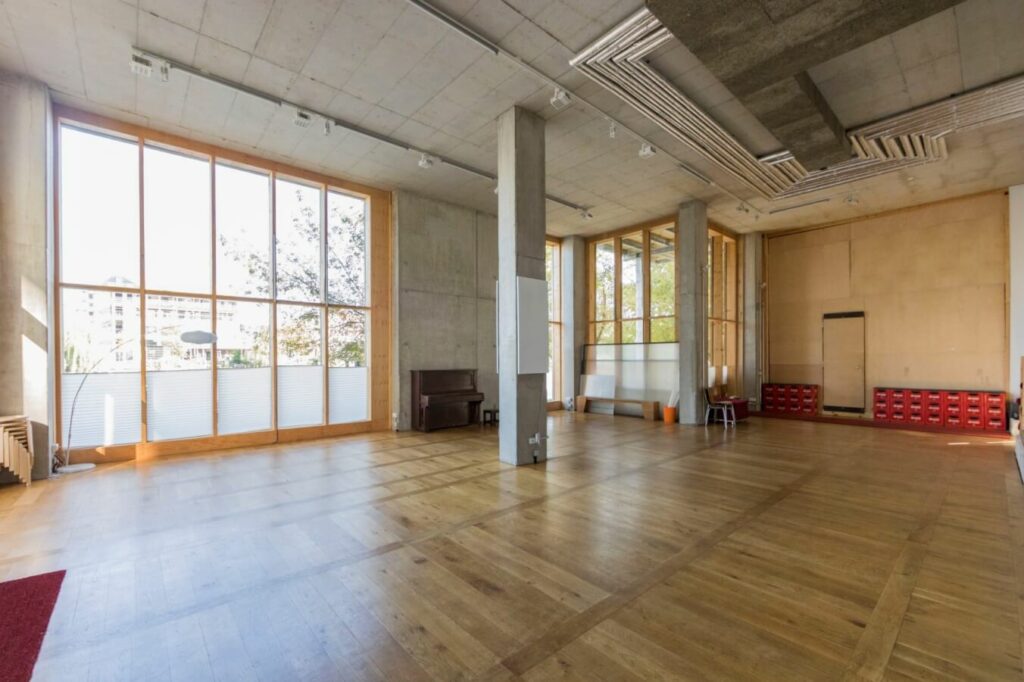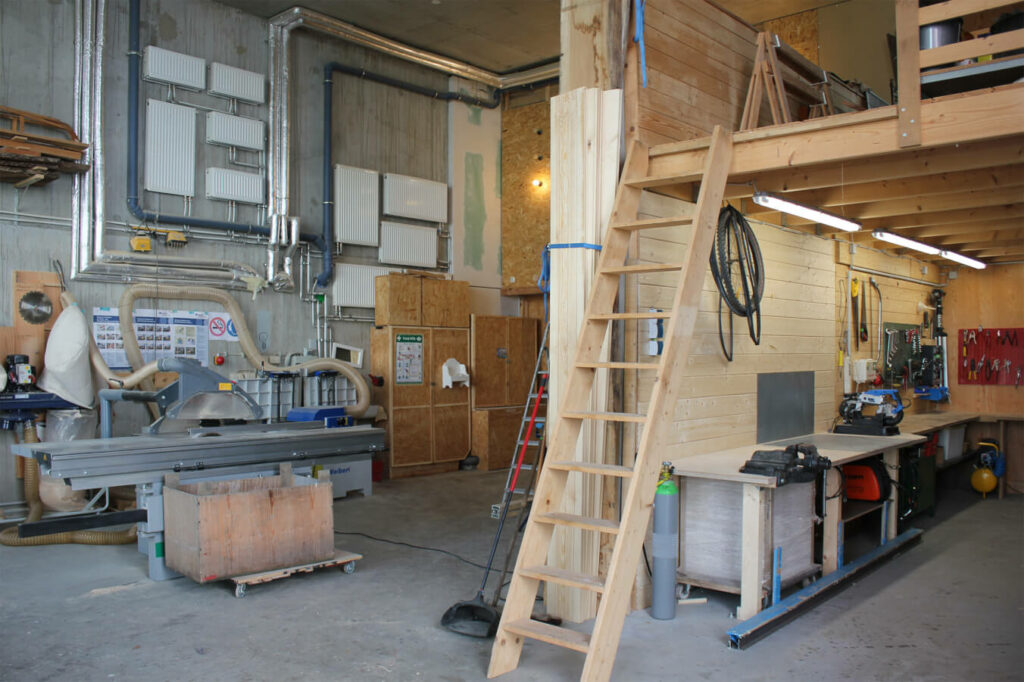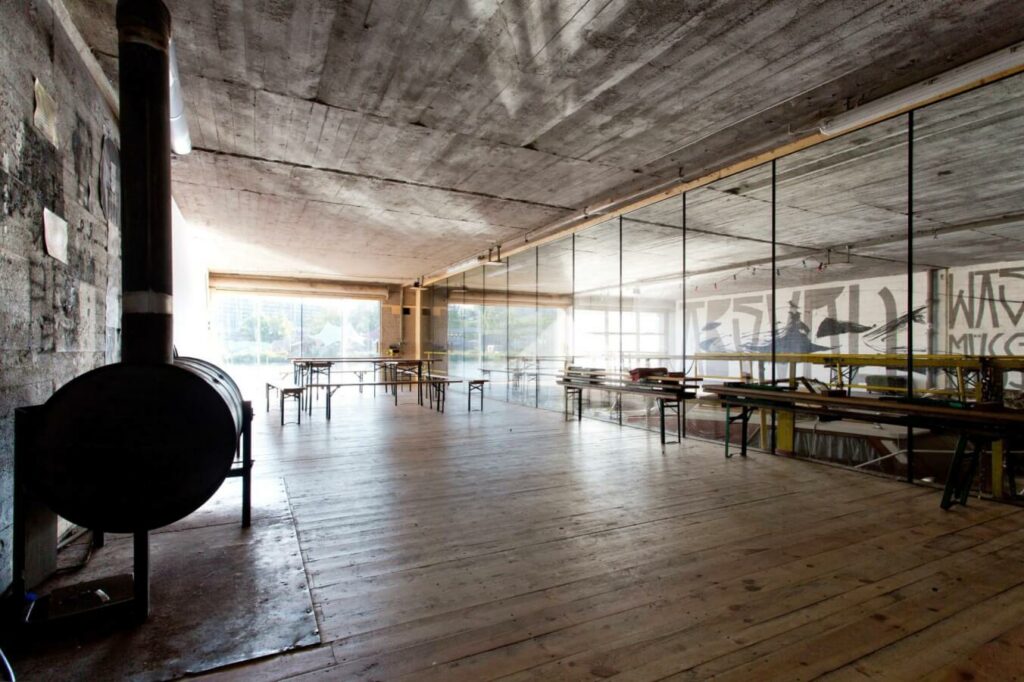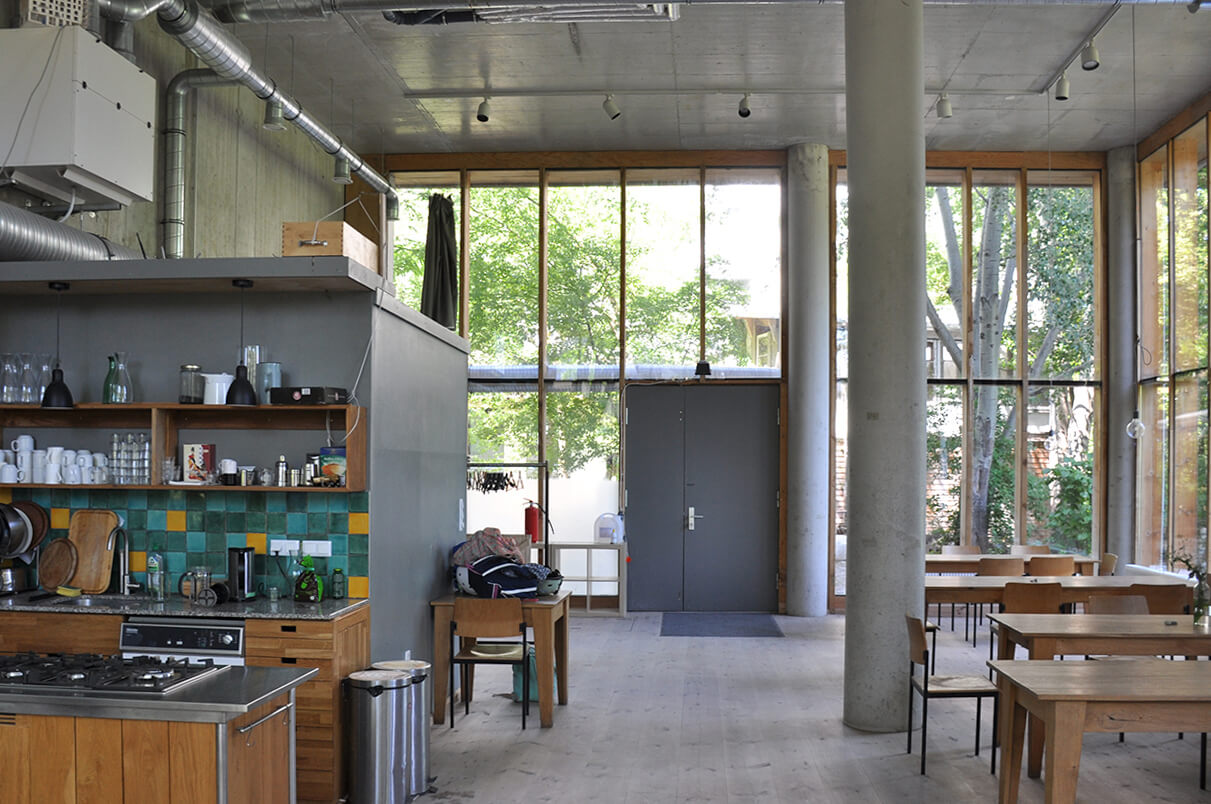Problem
Cities and residential neighbourhoods need spaces that are unassigned and offer the chance to realise varying activities in an uncomplicated and cost-effective way. Which special and organisational requirements need to be fulfilled to establish spaces of opportunities, which contribute to the realisation of ideas within society and in cooperation with the neighbourhood? How do design options look like, which enable a great mix of uses and users?
Generic Description
Communal spaces that are undefined in their use and accessible by multi user groups are also called option spaces or joker rooms. Their undetermined manner offers a high degree of flexibility and a great scope of action. They can be used or rented as spare rooms for communal activities or guest rooms, which makes them accessible not only for neighbours but also for outsiders. Their flexibility of use thus covers the heterogeneous needs of the community and is able to promote neighbourly exchange and acceptance. At the same time, they can increase the financial scope of the community due to possible renting.



Example
The three option spaces at Spreefeld, each with 128 m², are undetermined in their use and are available for rental requests. They are located on the ground floor and can be used as temporary shops, exhibition spaces, auditoriums, workshop spaces, etc. as long as they conduct the cooperative’s programme and are not primarily profit-oriented. Since the beginning of the project, one of the rooms has served as a workshop. A curatorial team from the residents manages the option spaces.
The Hunziker Areal offers space for non-commercial, social events in the form of communal public spaces (Allmendräume). The rooms can be used free of charge by residents for events and self-organisation purposes.
Projects such as Kalkbreite or Giesserei have joker rooms that are available as temporary rentable guest rooms or flat extensions.
Lessons learned and synergies
With the beginning of the planning phase option rooms need to be considered in the space programme and should be placed somewhere accessible. The space concept should offer a high user and utilisation flexibility, to react to changing wishes and requirements of the residents and neighbourhoods. Infrastructure requisitions need to be defined at an early stage, such as room size, sanitary facilities, lighting, open space use etc. because they influence long term utilisation options. The planning and management of option spaces require readiness to engage in dialogue for negotiation processes, a well organised management and rental system and clear responsibilities to limit conflicts of use. If well designed, option and joker rooms promote openness and experimentation through their flexible space offer and strengthen the community aspect, as future space allocations have to be decided jointly.
Sources
Ballhausen, N. & Kleilein, D. (2014): Spreefeld. In: Bauwelt 39.2014: Neue Genossenschaften, 16-23.
Accessed on 22.02.2021 from https://www.bauwelt.de/dl/805623/bw_2014_39_0014-0023_NEU.pdf
Capeller, R. (2016): Wohnvarianten in Relation: Neue Wohnkonzepte in Berlin, Zürich und Weimar. In: Baunetzwoche #441, 8-19.
Accessed on 22.02.2021 from https://www.baunetz.de/baunetzwoche/baunetzwoche_ausgabe_4689126.html
